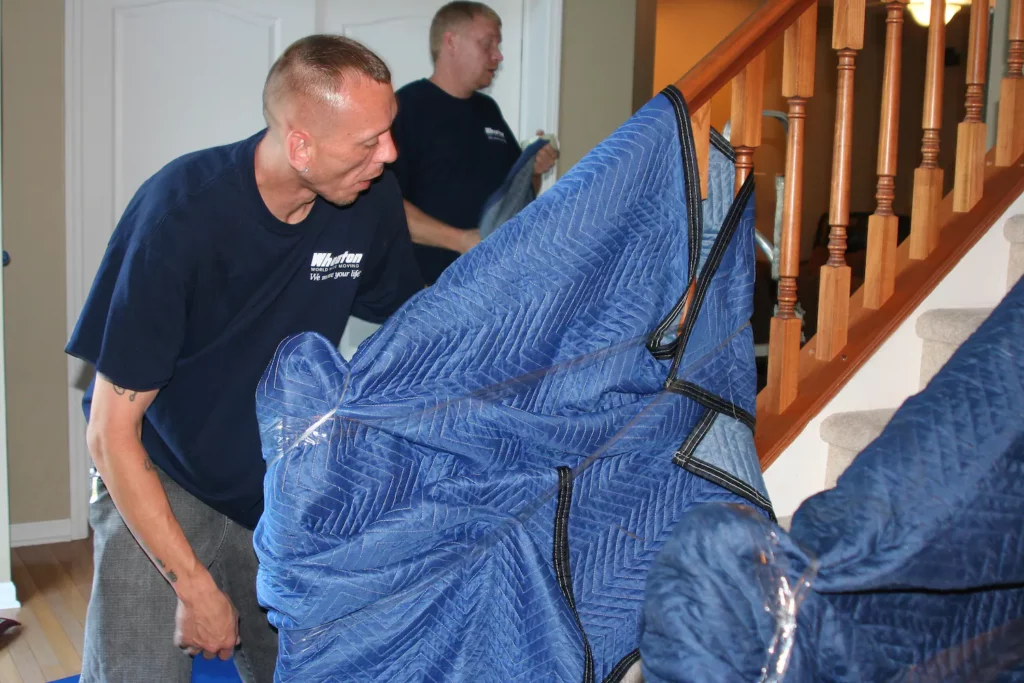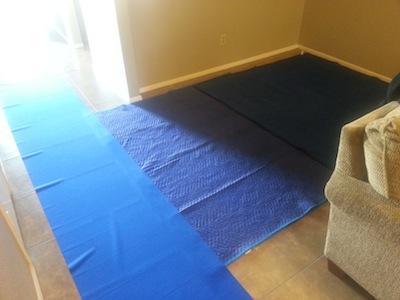Moving to a new home is an exciting adventure, but it can also be a bit rough on your current living space. The last thing you want is to leave a trail of scuffs, scratches, and dents on your walls and floors. In this blog post, we’ll share some practical tips to help you protect your walls and floors during the moving process.
1. Gather the Right Supplies
Before you start packing and moving, make sure you have the following supplies on hand:
- Furniture blankets or moving blankets: These padded blankets are excellent for wrapping furniture and providing a buffer against walls and floors.
- Bubble wrap or furniture pads: Use these to protect delicate items and the corners of furniture.
- Cardboard sheets: Lay these on the floor to create a path for heavy furniture to move along.
- Packing tape: Use strong, reliable packing tape to secure blankets, bubble wrap, and cardboard sheets in place.
2. Plan Your Path
When moving heavy furniture, plan your path carefully. Measure doorways and hallways to ensure furniture will fit through without damaging walls or door frames. If necessary, remove doors temporarily to create more space. Clear the path of any obstacles, such as rugs or small furniture items, to avoid tripping hazards.

Protection is key
3. Wrap and Pad Furniture
Before moving any furniture, take the time to wrap and pad it properly:
- Cover sharp edges and corners: Use bubble wrap or furniture pads to protect these vulnerable areas.
- Wrap in blankets: For larger items like sofas, dressers, or tables, wrap them in furniture blankets or moving blankets. Secure the blankets with packing tape to keep them in place.
- Disassemble if possible: If you can, disassemble furniture like bed frames or tables to make them easier to maneuver.
4. Use Furniture Sliders
Furniture sliders are small, plastic or felt-covered disks that fit under the legs or corners of heavy items. They allow you to glide furniture across floors without causing scratches. Place sliders under each leg or corner, and then gently push or slide the furniture to its new location.
5. Protect Floors with Cardboard or Drop Cloths
Place cardboard sheets or drop cloths on the floors in high-traffic areas. This provides a protective barrier against dirt, scuffs, and scratches. Secure the edges with masking tape to prevent tripping hazards.
6. Lift Carefully
When lifting heavy items, use proper lifting techniques to minimize the risk of damaging walls or floors:
- Bend your knees and lift with your legs, not your back.
- Keep the item close to your body.
- Have a spotter assist with navigation through tight spaces.
7. Take Your Time
Rushing through the moving process can lead to accidents and damage. Take your time when moving furniture and boxes to ensure a safe and damage-free transition.
8. Inspect and Repair
After the move, inspect your walls and floors for any damage. Address any scuffs, scratches, or dents promptly to prevent further deterioration. Touch up paint on walls and repair any damaged floorboards or tiles.
In conclusion, protecting your walls and floors during a move requires a combination of planning, preparation, and careful execution. By gathering the right supplies, using proper lifting techniques, and taking your time, you can ensure a smooth move without leaving a trail of damage behind. Your new home will thank you for the care and attention you’ve given to safeguarding your current space.
Back to Our Blog https://speedymove.jp/blog/
Our recommended home centers across Japan

